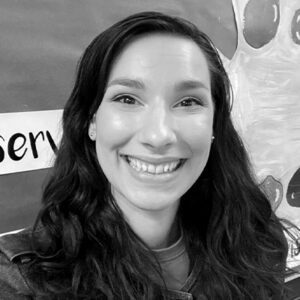Note: Adhere to your district and school’s food and allergy guidelines. If you notice a student who appears hungry or is experiencing food insecurity, promptly reach out to your administrator and professional school counselor to ensure the student receives support and resources.
Are you ready to explore the deliciously creative world of art? Get your appetite ready because we’re about to delve into the role of food in the art room! Art teachers often incorporate food into lessons in many ways. Food can be used as a subject for still-life drawings or as a plate for printmaking. Because of this, it’s important to be aware of the potential impact on students who may not have access to regular meals.
Food is a key ingredient in historic and current artmaking. Let’s investigate the role of food in art history, the benefits and implications of bringing food into the classroom, and seven practices to consider as you plan.
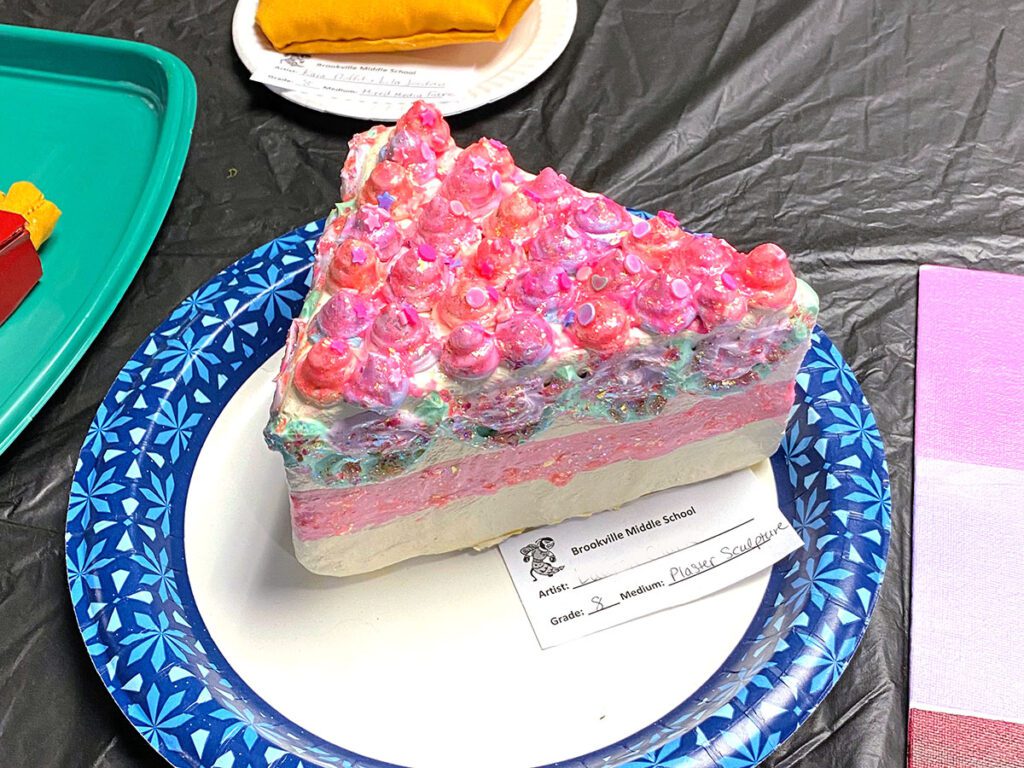
Why is food significant in art history?
Understanding the significance of food in art and its impact on students is crucial. Food in art is not a new concept and has been the main subject matter since Prehistoric cave paintings. However, part of our job as art teachers is to be aware of broader contexts so we can aim to be as inclusive as possible. Continue reading to discover how deep food goes in art history, and therefore, the art classroom and curriculum.
Historic Artwork
Food has left its tantalizing mark on the canvas of art history. Throughout time, people made art about what was most important to them. For the earliest group of people during Prehistoric times, each day was about survival. This is depicted in cave art with the primary subject matter being animals they hunted.
In ancient Egypt, food offerings in art were a way to honor deities and ensure their favor. In Japan, they used a fish as a printing plate for gyotaku prints to preserve the memory of a catch. Fast-forward to the Renaissance and Baroque periods where the development of still-life painting flourished. Artists captured the beauty and symbolism of various delicacies in meticulous detail. Giuseppe Arcimboldo pushed the boundaries by painting portraits composed entirely of fruits, vegetables, and other foods.
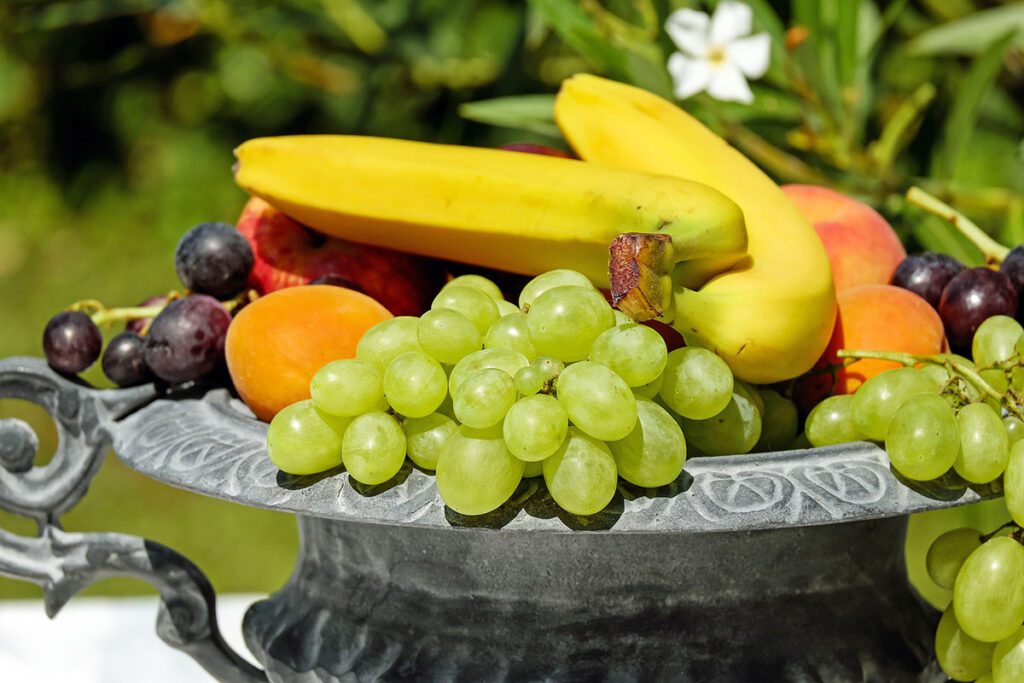
Modern and Contemporary Artwork
Skipping ahead a few more centuries into the Pop Art movement, food was used as a symbol for consumer culture and mass production. Artists like Claes Oldenburg created larger-than-life sculptures of food. Wayne Thiebaud celebrated the simple pleasures of life through whimsical paintings of cakes and pastries.
Frida Kahlo incorporated food as a metaphor for personal struggles and cultural identity. Judy Chicago challenged societal norms around femininity with culinary imagery. Contemporary artists like Tisha Cherry or Lauren Purnell use snacks and leftover scraps of food to compose compelling collages and sculptures. Because food is so intertwined in art history, it’s natural for these artists, artworks, and techniques to make their way into the art curriculum. Before you start planning the next lesson, let’s touch on how food can impact our students.
What are the benefits and implications of bringing food into the art room?
Our students today are no different—food is just as important to them now as it was to the artists of the past. Unfortunately, for many of our students, food is a scarce commodity. Food insecurity is when students have limited amounts of finances or resources to access enough food. In the United States, more than 38 million Americans experienced food insecurity last year and 1 in 6 students come to school hungry. Full, hungry, or somewhere in between, there are educational benefits to bringing food into the art room. And, as the reflective art teacher you are, there are also a few things to be on the lookout for as you foster an inclusive art studio.
Benefits
Food provides a captivating subject matter to spark students’ imagination. The vibrant colors and intricate details found in food offer opportunities for experimentation. Students can work with composition, perspective, and color mixing. We saw examples above of artists who used food as inspiration in their own work. Using food in the art room creates dynamic and engaging exploratory studies and final artworks.
Here are some other benefits:
- Develops observational skills and attention to detail.
- Promotes cultural awareness and appreciation.
- Relates art to students’ daily lives.
- Allows for sensory exploration.
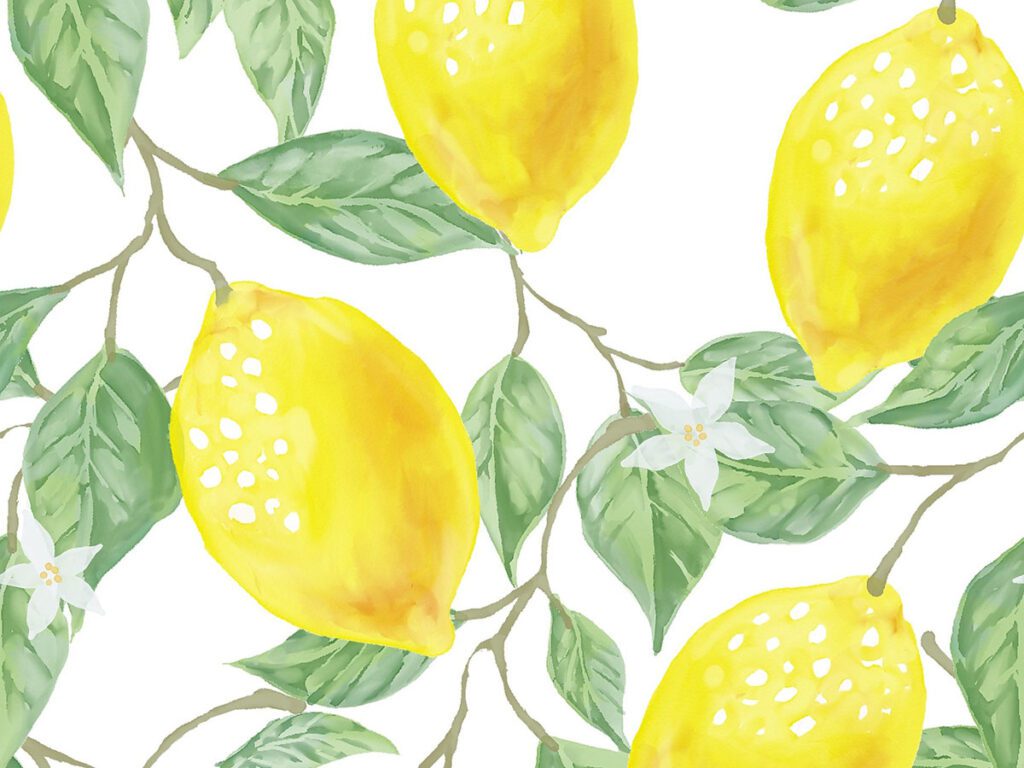
Implications
To create a classroom where as many students as possible feel safe, consider the impact of food insecurity on students. AOEU Associate Professor and Curriculum Specialist, Theresa Haugen, explains there can be negative effects of hunger in art class. For example, she shared a story of a student who came up to her after class and asked if they could eat the fruit from the still life.
Here are some other behaviors that may stem from food insecurity or hunger-related fatigue:
- Doesn’t seem interested in the lesson or working.
- Requests to stay in the art room during lunch instead of going to the cafeteria.
- Absent from school due to frequent illnesses.
- Inability to concentrate, especially on tasks requiring fine motor skills.
- Appears tired or lethargic.
- Acting out.
- Complains of a stomachache or being cold.
- Declining academic performance and lower grades.
What seven practices can art teachers consider?
When incorporating food in the art room, art teachers may find themselves at a crossroads. You can avoid the use of food altogether and offer alternative materials or subject matter. The other path involves embracing food in the art room and providing food or snacks for students who are hungry. But how do you determine which route to take?
Here are four pointers to reflect on before diving into the tips below:
- Research the student demographic, including how many students receive free or reduced meals.
- Chat with the school’s professional counselors to see what resources are available and when to refer students to them.
- Start a dialogue with your department chair and administration to garner support.
- Look at your lessons from different perspectives to ensure as many students as possible can access the content regardless of home life, background experience, and more.
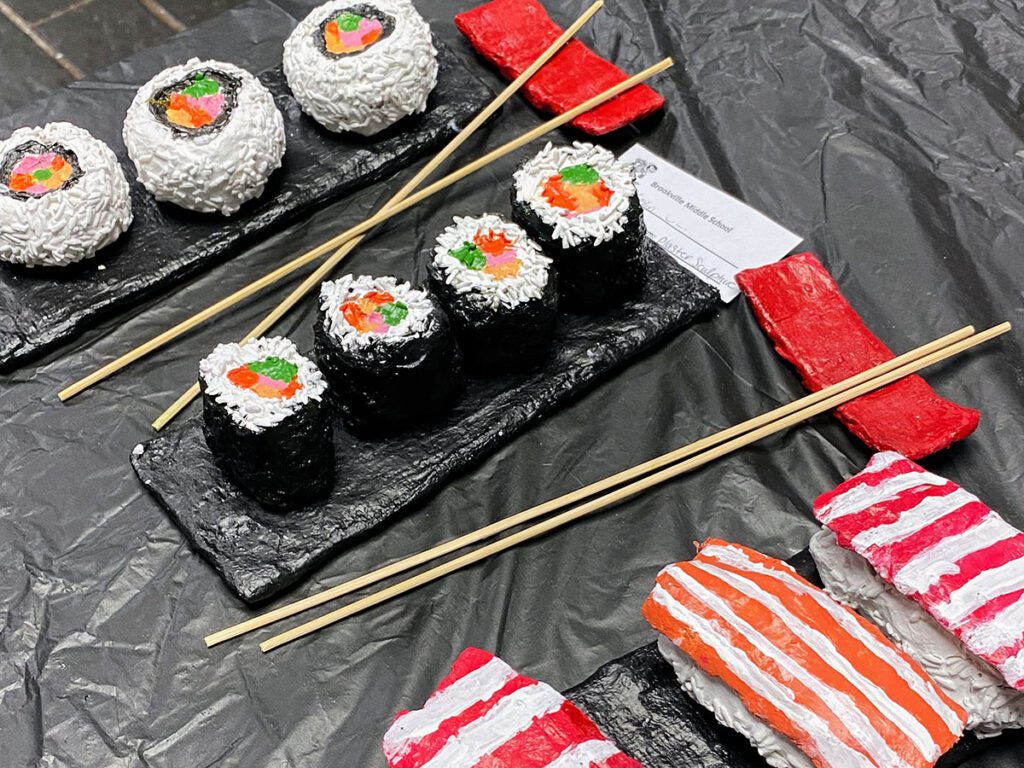
1. Know your students and their backgrounds.
Building relationships with your students is always important. Part of relationship building can be understanding cultural, religious, and dietary backgrounds. Ask your students to share fun facts about themselves, rope in your administration for the data portion, and connect with the health office or school nurse for known allergies. This knowledge will help you avoid causing discomfort or offense when using food in the art room. For example, some students fast during certain months for religious reasons. They may choose to abstain from consuming food or drink from dawn to sunset. This can inform when you plan a food unit so as many students as possible can participate.
2. Incorporate alternative subject matter.
There is nothing better than using real objects in a still life because it helps students capture more detail and it makes the experience more authentic. However, if there are students experiencing food insecurity, it can be very challenging for them to spend an entire period (or unit!) looking at food they are not allowed to eat. Theresa suggests using different organic objects such as flowers, acorns, or shells in lieu of food.
3. Make your own faux food.
Create a double unit where students sculpt their own faux food using clay or toilet paper. Then, use the food sculptures as your still life for a drawing or painting assignment. This shows connections between different mediums. Combining two- and three-dimensional art forms also hones artmaking skills and techniques.
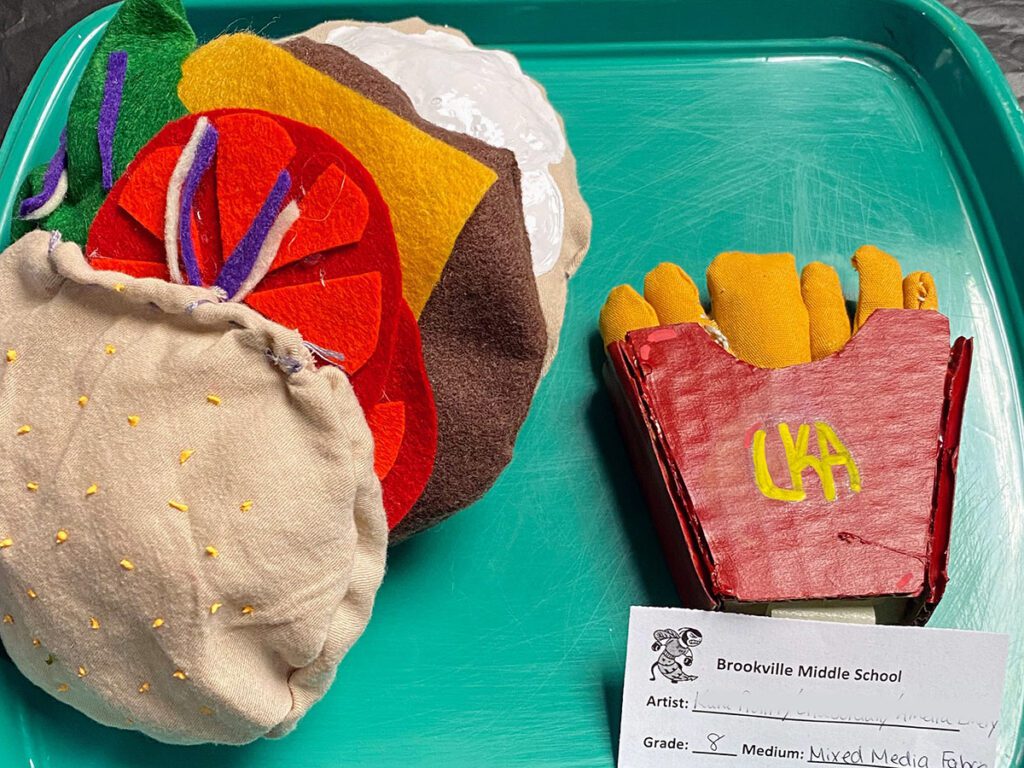
4. Add a designated snack time and snack cupboard.
Some students may rely on school meals as a primary source of nutrition. As such, it can be insensitive to munch on a granola bar in front of them while they are trying to concentrate during studio time. At the secondary level, many students bring their own snacks to school and pull them out whenever they want.
To avoid making students who are hungry feel uncomfortable and left out, consider designating a five-minute snack time. Not only can this help break up longer periods, but it can also provide your students with the quick energy and social boost they need to get through the rest of the class. A designated snack time also fosters a sense of community as everyone chats and eats together. Be sure to adhere to your district and school’s food guidelines and ensure students wash their hands and tables before consuming anything.
To make things even more fun, you may occasionally provide themed snacks to go with the unit at hand. A student-favorite activity is to create color wheels with frosting and food coloring on cookies or cupcakes. Whatever you decide, double-check with your administration and school nurse before your lesson to ensure you are following district and school guidelines when it comes to food and allergies.
With administrative permission, make a designated space in your room where students can bring non-perishable items. Ensure the cupboard, drawer, or plastic tub is safe from any unwanted critters. Explain the purpose of the food cupboard to your students. This can be a good opportunity to bring awareness to food insecurity with sensitivity and intention while fostering empathy and social responsibility. Reach out to local organizations including grocery stores and your PTA/PTO to provide donations of cereal bars and granola bars.
See secondary art teacher, Tasha Newton’s, snack drawer in the video below.
5. Design and create a community garden.
Engage students in a project where they design a community garden. You can do this on school grounds or elsewhere through a local organization. Consider collaborating with the science or horticulture teachers for interdisciplinary connections. Students can explore themes of food, sustainability, and the environment. Include students in the design of the garden layouts. Students can also create plant markers, signage, and murals.
6. Use food as an art medium.
Alternatively, explore using food as an art medium. Introduce students to artists who use food for art materials like Tisha Cherry, Lauren Purnell, and Daryna Kossar. Provide food items for each student so they can create unique artwork. Then, once you or the students photograph the artwork, they can eat their work! This can be a fun way to provide a snack for all students while incorporating unconventional contemporary artists.
7. Collaborate with other departments and staff.
Work with the cafeteria or food services staff, science department, or family and consumer science teachers to integrate food-related units into your curriculum. Explore the art of food styling, design a food truck, or examine the parts of fruits and vegetables with botanical illustrations. Food is a great way to create connections with other content areas and career choices.
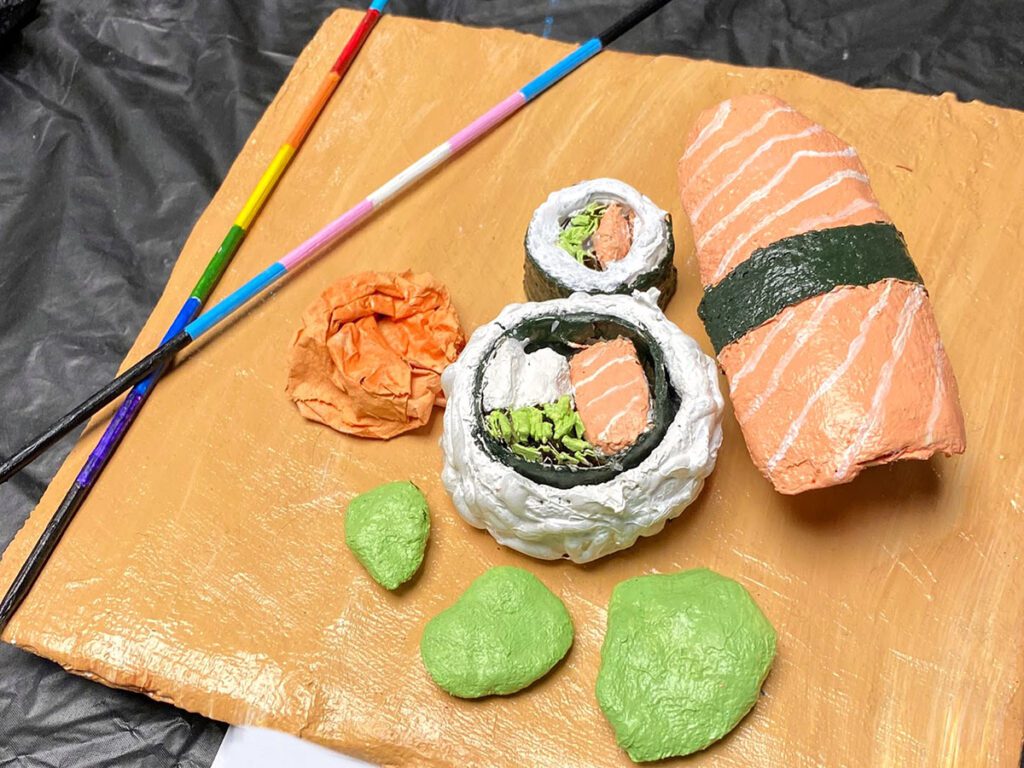
The role of food in the art room offers a delectable avenue for creativity and exploration. Take the time to step back and see how food is integral to art throughout history as both subject matter and art material. It’s a natural next step to bring it into the art classroom! In order to foster a considerate learning environment for as many students as possible, it’s important to recognize the pros and cons of doing so. Food can immediately hook students by creating relatable connections to art. But for students who have food insecurity, looking at food they can’t eat in the art room can be difficult. Get to know your student demographics and start conversations with your administration. Then, design a community garden focused on sustainability, designate a class snack time with provided snacks, or make faux food to use in lieu of real food. There are many thoughtful ways to include food in the art room that strikes a good balance between creativity and empathy.
How do you incorporate food into your art curriculum?
Have you considered how food insecurity impacts your students?
What is one way you will be more inclusive around food insecurity this year?
Magazine articles and podcasts are opinions of professional education contributors and do not necessarily represent the position of the Art of Education University (AOEU) or its academic offerings. Contributors use terms in the way they are most often talked about in the scope of their educational experiences.

